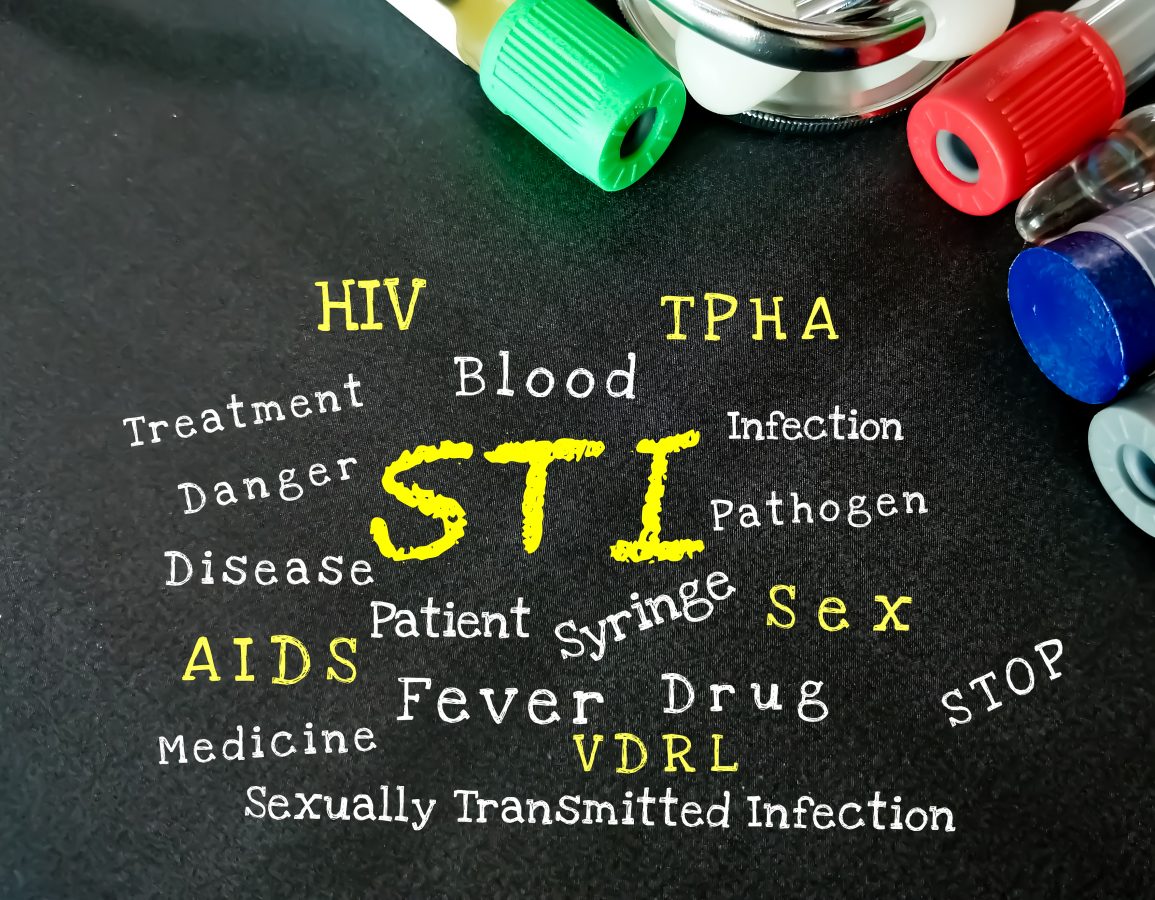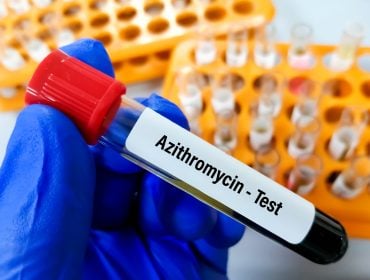STDs and HIV CoInfection
Sexually transmitted diseases (STDs) are an unfortunate part of life. Millions of people will contract an STD this year and, statistically, many of those people are completely unaware of their infection. While an unknown STD poses the risk of being spread countless times before being discovered, there’s another risk— the risk of co-infection— that is often overlooked.
What is a Coinfection?
Coinfection refers to the presence of two or more distinct infections in an individual at the same time. This can occur when a person is infected with different types of pathogens, such as viruses, bacteria, fungi, or parasites. Coinfections can be complex and challenging to diagnose and treat, as the presence of multiple infections can affect the symptoms, course, and outcome of the individual’s illness. In some cases, coinfections can also lead to increased morbidity and mortality and can interact in ways that make one infection more severe or impact the ability of the body to respond to treatment.
Having an active STD is a major risk factor for contracting other STDs, including HIV. Many STDs are characterized by skin lesions or areas where the skin is broken, giving STDs and HIV an access point for entering the body. Syphilis and herpes, create chancres and blisters, respectively, which make it easier to contract another STD. STDs also trigger a increase in the production of white blood cells to attack the infections. Because HIV specifically targets immune cells, the presence of more white blood cells creates more opportunities to become infected with HIV. Gonorrhea, chlamydia, and trichomoniasis all cause immune reactions, such as inflammation, making it easier to become infected with HIV when any of those infections are present.
Can you have a coinfection with HIV and STDs
Yes, it is possible to have a coinfection with both HIV and a sexually transmitted disease (STD). In fact, having an STD can increase the risk of acquiring HIV, as STDs can cause sores or breaks in the skin that can provide an entry point for the virus. Similarly, if a person already has HIV, they may be at a higher risk of acquiring another STD due to a weakened immune system. It is important for people who are sexually active to practice safe sex and get tested regularly for STDs, including HIV. Early detection and treatment can help prevent the spread of STDs and reduce the risk of complications from coinfections.
Chlamydia & Gonorrhea Coinfection
Coinfection is the outcome of contracting a second STD while already actively infected with an STD. The most common use of the term co-infection is in reference to gonorrhea and chlamydia, which often occur together. The two infections are discovered together so often that it is actually recommended to get tested for both at the same time. Data released by the Virgina Department of Health supports the estimate that between 40 and 50 percent of all young adults infected with gonorrhea also have a chlamydia infection, with women more likely to have a co-infection than men. The risk of testing positive for both chlamydia and gonorrhea also increased when the use of drugs or alcohol was reported. Both chlamydia, which is caused by the Chlamydia trachomatis bacteria, and gonorrhea, caused by Neisseria gonorrhoeae bacteria, can be treated with antibiotics. If the infection is caught early enough, sometimes only a single dose of antibiotics is needed.

HIV Coinfections
Human immunodeficiency virus (HIV) is an incurable viral infection that attacks the immune system, destroying the infected person’s ability to fight off infection and disease. People living with HIV run a much higher risk of suffering from an STD coinfection than the HIV-negative community. The amount of HIV found in the genital secretions, known as the viral load, is much higher in people with an active STD infection. If HIV is left untreated, it progresses into the terminal late-stage known as Acquired Immune Deficiency Syndrome (AIDS). By the time HIV becomes AIDS, the patient has lost so much immune capability that they are extremely susceptible to infections, including STDs. Approximately 25% of people with HIV will also suffer from tuberculosis, which is the second highest cause of death for people living with HIV/AIDS. HIV co-infection is a serious and life-threatening condition that can be prevented.
HIV and Syphilis Coinfection
HIV and syphilis have a long history of co-infection. According to a report conducted by the state of Virginia, approximately one-third of all new cases of syphilis diagnosed in Virginia were in individuals who had previously been diagnosed with HIV. The rate of syphilis infection in the HIV-positive community is 118 times higher than the general population. Receptive anal sex is considered a high risk behavior for contracting STDs because of the ease of damaging anal tissue, which allows a path for STDs to move between bodies via sexual fluids, such as semen. For this reason, men who have sex with men are the most affected by HIV and syphilis co-infection, with the state of Virginia reporting that 99.5 percent of all HIV/syphilis co-infections were among males, with 90 percent of those males engaging in sex with another man.
HIV and Gonorrhea Coinfection
While gonorrhea, known as “the clap,” and chlamydia are the most closely linked of all co-infections, gonorrhea also has a close tie to HIV. According to data released by the Washington State Department of Health, approximately 6 percent of all people diagnosed with gonorrhea were already living with HIV. Developing an immunity to HIV medications, as well as the chance of contracting an antibiotic-resistant strain of gonorrhea make this combination of infections particularly serious.
HIV and Hepatitis C Coinfection
The World Health Organization states that 170 million people have been diagnosed with hepatitis C in the past century, making it an epidemic on a larger scale than even HIV, which has resulted in about 79 million diagnoses since the start of the HIV Epidemic. Hepatitis C is an incurable infection that has many life-threatening side effects, such as liver failure, cirrhosis, and cancer. Hepatitis also makes it more difficult for the immune system to properly fight off infection, making it easier to also become infected with HIV. Antiviral medications are prescribed to treat hepatitis C, as well as HIV. The biggest factor in contracting HIV when an active hepatitis C infection is present is the patient’s behavior, which includes intravenous drug use or unprotected sex in many cases. Being diagnosed with hepatitis C while living with HIV is one of the criteria for receiving an AIDS diagnosis. About 25% of HIV-positive Americans also have hepatitis C.
Preventing CoInfections
Early detection is the key to preventing STDs in general, as well as co-infections. By getting tested, you’re ensuring that you know your status. When you know your status, you can prevent the transmission of STDs, avoid co-infections, and take precautions, such as getting vaccinated and practicing safe sex, to safeguard against STDs in the future. If you are HIV-positive, it is crucial to seek treatment, take your medication, and keep track of your viral load. Frequent STD testing becomes even more important once someone is diagnosed with HIV. Likewise, anyone who tests positive for an STD should also take an HIV test.
Medically Reviewed by Julie Hutchinson, MD on February 8, 2023
Secure and Confidential
STD testing services
The fastest results possbile - available in 1 to 2 days

Tagged
Categorized As
Author: Kristena Ducre
Kristena is a sex-positive LGBTQ ally and general fan of sexy things. As a writer, she is passionate about empowering people's sex lives with accurate and straightforward information. Sex can be a ton of fun, but sexual health is not a laughing matter. In the bedroom, as in life, knowledge is power.




